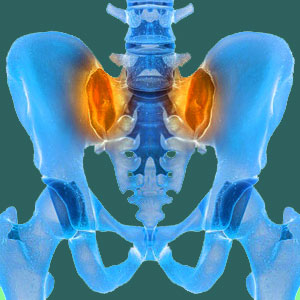
SI-LOK is a surgical sacroiliac fusion system developed by Globus Medical. The product is used to permanently bind the pelvic ilium to the sacrum without allowing any movement of the SIJ at all. This procedure is performed rather commonly for unresponsive sacroiliac joint pain.
SI-LOK is just one of many products that can be used to perform sacroiliac joint fusion. There are some unique features of this surgical system that might give it an advantage or may create liabilities. Only time will tell for sure how well the device performs in actual patient living normal lives.
This discussion provides a basic overview and analysis of the SI-LOK sacroiliac joint fusion system. If you are considering undergoing a fusion procedure, then the device is certainly worth your attention as an educated patient.
What SI-LOK?
The device is a compete set of surgical hardware to be used specifically for fusing a painful sacroiliac joint via minimally invasive surgery. The procedure used to install the device is performed from a lateral approach through a small incision in the buttock/hip region.
The complete kit consists of wires that are installed through the pelvic ilium and into the sacrum, drill bits to install the hardware and specially-designed hollow core screws that are installed over the guide wires and then packed with bone grafts in order to further reinforce the fusion and make it more organic.
Although seemingly simple, the system must be widely applicable to many different types of joint pain and be easily utilized with consistent results by surgeons. This makes the engineering behind the hardware a major medical accomplishment.
The device has been subjected to clinical studies and the long-term outcomes are still being evaluated by the manufacturer, as well as surgeons, physical therapists and various medical and governmental organizations.
SI-LOK and Sacroiliac Fusion Cautions
When it comes to sacroiliac joint fusion, many doctors take the matter rather casually. They figure that the joint barely moves at all in most people, so it is not a significant undertaking to fuse it completely in order to potentially end pain. However, the sacroiliac joint does indeed move and actually changes in its ability to move at different times and circumstances of life.
The joint is organically engineered to move and move it should, much in the same manner as the rest of the spine. Therefore, fusing the sacroiliac goes against its natural form and function and should never be attempted unless there is literally no other therapeutic option. Doctors still do not completely understand the sacroiliac joint, including why it does what it does and why it fails. Until we have a better understanding of the joint, choosing to fuse it tends to be one of the worst possible solutions, since the treatment fails in some cases and is irreversible in almost every instance.
Sacroiliac joint pain is a diagnosis that is often used to replace a previous misdiagnosis of lumbar spinal dysfunction. The first diagnosis of some spinal abnormality turned out to be wrong after many failed treatments and usually a failed surgery or 2. Patients should therefore be very careful about undergoing another operation for what may amount to yet another incorrect diagnosis. Remember that many cases of sacroiliac joint pain are indeed misdiagnosed and might consist of lower back symptoms, hip symptoms or even true sacroiliac pain without any structural merit. We see this final variety of symptomology very often in patients with chronic mindbody ischemia syndromes.




